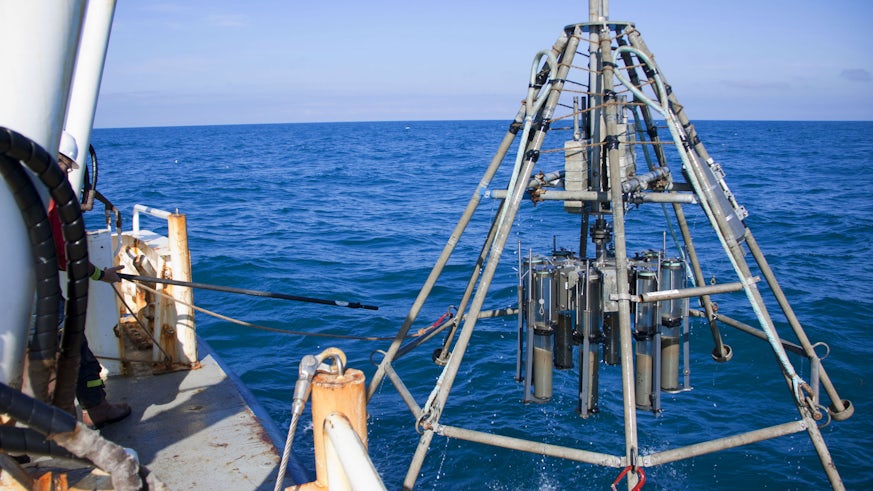Atlantic circulation weakest for over 1500 years
12 April 2018

Leading simulation models that predict the future climate on Earth could be overestimating the stability of one of the most important ocean circulation patterns, a new study has shown.
An international team, including researchers from Cardiff University, have taken the first comprehensive measurements of the strength of North Atlantic Ocean circulation, showing that it is at its weakest for over 1500 years.
This ocean circulation pattern, which acts as a conveyer belt to bring warm water to the UK, has been significantly weakening over the past 150 years, the scientists say, which correlates with the end of the Little Ice Age in 1850 AD and the onset of the industrial revolution.
During this time, glaciers have melted and an influx of freshwater has entered into the oceans, causing a significant disturbance to ocean currents and potentially having a dramatic impact on climates across Northern America and Western Europe.
The North Atlantic Ocean circulation, otherwise known as the Atlantic Meridional Overturning Circulation (AMOC), is responsible for transporting warm water, and with it maintaining mild climate conditions in Western Europe and regulating oceanographic patterns important for marine life.
The AMOC is crucial to the world’s climate, and an abrupt slowdown could trigger various disruptions globally. These include a sudden rise in regional sea levels, changes in major rainfall patterns and the position of arid climate zones and the potential of freezing winters across Western Europe.
The new study, which has been published in the journal Nature, has shown that the present-day AMOC is exceptionally weak, and that the models we currently use to predict our future climate could be underestimating its stability.
Co-author of the study Professor Ian Hall, from the School of Earth and Environmental Sciences, said: “The impact of freshwater influxes on ocean circulation and climate stability during the time of the last Ice Age are well documented, but our results clearly demonstrate that significant change has also occurred during the recent past.
“These findings have important implications for future research because they aid our understanding of the magnitude of climate change and the mechanisms involved. This will clearly provide a useful target for assessing the models that are used to predict future patterns of climate change.”
“Our results suggest that when simulating historical climate events, leading climate change models are either not sensitive enough to changes in the natural environment, such as the influxes of freshwater, or they are not including all the relevant processes,” said lead author of the study Dr David Thornalley from University College London.
“Given that climate models do not fully capture the events that we are reporting, we have to ask: what does this mean for the future, and how does this relate to the changes expected with global warming?”
To investigate variations in the AMOC changes in the size of sediment grains deposited by deep-sea current were examined to infer past changes in the strength of circulation
The research also involved scientists from Woods Hole Oceanographic Institution and the University of Reading.


